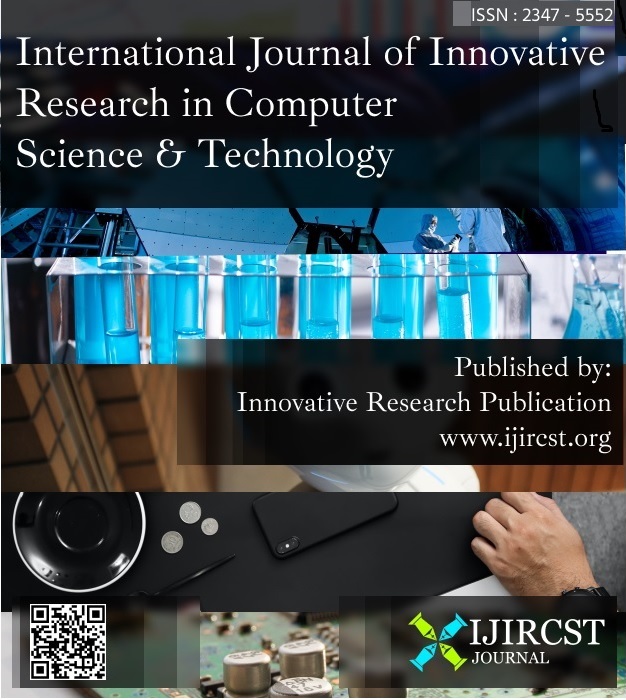Development of an AI-Driven Model for Advancing Software Engineering Practices
Keywords:
AI, Software Engineering, Requirements Management, Fuzzy LogicAbstract
This work introduces the Fuzzy Specification Tree Model (FST), a general-purpose framework designed to enhance AI-assisted software engineering. The paper begins by examining the intricate interplay between software engineering and artificial intelligence (AI), emphasizing how AI technologies are reshaping software development methodologies. Building on a foundation of requirements-driven approaches, the study presents a novel adaptation of classical feature modelling to create a versatile, fuzzy logic-based requirements specification model. This model not only facilitates the definition of functionalities for partially completed software but also supports formal methods for project management, version control, and reuse. By employing separate Fuzzy Specification Trees for requirements and the current state of a project, developers gain a dynamic perspective on project completeness and can leverage AI assistance to prioritize tasks, ensuring efficient progression toward project completion with minimal effort.
References
K. C. Kang, S. G. Cohen, J. A. Hess, W. E. Novak, and A. S. Peterson, Feature-Oriented Domain Analysis (FODA) Feasibility Study, Pittsburgh, PA, USA: SEI, Carnegie Mellon University, Tech. Rep. CMU/SEI-90-TR-021, Nov. 1990. Available from: https://www.researchgate.net/publication/215588323_Feature-Oriented_Domain_Analysis_FODA_feasibility_study
P. Pandey, "Analysis of the techniques for software cost estimation," in 2012 Third International Conference on Advanced Computing & Communication Technologies, pp. 16–19, 2012, doi: 10.1109/ACCT.2013.13. Available from: https://doi.org/10.1109/ACCT.2013.13
A. Haveri and Y. Suresh, "Software fault prediction using artificial intelligence techniques," in 2nd IEEE International Conference on Computational Systems and Information Technology for Sustainable Solutions (CSITSS), pp. 54–60, 2017. Available from: https://doi.org/10.1109/CSITSS.2017.8447615
M. Lopez, "Machine learning techniques for software testing effort prediction," Software Quality Journal, Springer, 2020, Available from: https://doi.org/10.1016/j.jer.2023.100150
H. Hourani, A. Hammad, and M. Lafi, "The impact of artificial intelligence on software testing," in 2019 IEEE Jordan International Joint Conference on Electrical Engineering and Information Technology (JEEIT), pp. 565–570, 2019. Available from: https://doi.org/10.1109/JEEIT.2019.8717439
R. Jindal, R. Malhotra, and A. Jain, "Predicting software maintenance effort using neural networks," in 2015 IEEE International Conference, 2015. Available from: https://doi.org/10.1109/ICRITO.2015.7359258
D. Wangoo, "Artificial intelligence techniques in software engineering for automated software reuse and design," in 2018 4th International Conference on Computing Communication and Automation (ICCCA), pp. 1–4, 2018. Available from: https://doi.org/10.1109/CCAA.2018.8777584
S. Pattnaik and B. Pattanayak, "A survey on machine learning techniques used for software quality prediction," International Journal of Reasoning-based Intelligent Systems, vol. 8, no. 1/2, pp. 3–14, 2016. Available from: http://dx.doi.org/10.1504/IJRIS.2016.080058
M. Fowler, K. Beck, J. Brant, W. Opdyke, and D. Roberts, Refactoring: Improving the Design of Existing Code, Addison-Wesley Professional, 2002. Available from: https://silab.fon.bg.ac.rs/wp-content/uploads/2016/10/Refactoring-Improving-the-Design-of-Existing-Code-Addison-Wesley-Professional-1999.pdf
E. Fenandes, J. Oliveira, G. Vale, and T. Paiva, "A review-based comparative study of bad smell detection tools," in EASE '16: Proceedings of the 20th International Conference on Evaluation and Assessment in Software Engineering, June 1–3, 2016, doi: http://dx.doi.org/10.1145/2915970.2915984.
M. Alenezi and M. Zarour, "An empirical study of bad smells during software evolution using Designite tool," i-manager’s Journal on Software Engineering, vol. 12, no. 4, pp. 1–10, Apr.–Jun. 2018. Available from: http://dx.doi.org/10.26634/jse.12.4.14958
P. Danphitsanuphan and T. Suwantada, "Code smell detecting tool and code smell-structure bug relationship," in 2012 Spring Congress on Engineering and Technology (S-CET), pp. 1–5, May 2012, doi: 10.1109/SCET.2012.6342082. Available from: https://doi.org/10.1109/SCET.2012.6342082
N. Moha, Y.-G. Guéhéneuc, L. Duchien, and A.-F. Le Meur, "DECOR: A method for the specification and detection of code and design smells," IEEE Transactions on Software Engineering, vol. 36, no. 1, pp. 20–36, Jan.–Feb. 2010, Available from: https://doi.org/10.1109/TSE.2009.50
N. Tsantalis, T. Chaikalis, and A. Chatzigeorgiou, "JDeodorant: Identification and removal of type-checking bad smells," in Proceedings of the 12th European Conference on Software Maintenance and Reengineering (CSMR), Athens, Greece, Apr. 2008, pp. 329–331, Available from: https://doi.org/10.1109/CSMR.2008.4493342
S. Vidal, H. Vazquez, and A. Diaz Pace, "JSpIRIT: A flexible tool for the analysis of code smells," in 2015 34th International Conference of the Chilean Computer Science Society (SCCC), Santiago, Chile, Nov. 2015, Available from: http://dx.doi.org/10.1109/SCCC.2015.7416572
A. Fard and A. Mesbah, "JSNOSE: Detecting JavaScript code smells," in Proceedings of the 13th IEEE International Working Conference on Source Code Analysis and Manipulation (SCAM), 2013, pp. 116–125, Available from: https://doi.org/10.1109/SCAM.2013.6648192
M. Ilyas and M. Hummayun, "A comparative study on code smell detection tools," International Journal of Advanced Science and Technology, vol. 60, pp. 25–32, 2013, Available from: http://dx.doi.org/10.14257/ijast.2013.60.03
E. Miranda, "Moscow rules: A quantitative exposé," in Agile Planning and Delivery, Springer, 2022, pp. 11–25, doi: 10.1007/978-3-030-87515-1_2. Available from: https://www.researchgate.net/publication/356836488_MoSCoW_Rules_A_quantitative_expose_Accepted_for_presentation_at_XP2022
J. Hartmann and M. Lebherz, Literature Review of the Kano Model Development Over Time (1984–2016), Bachelor's Thesis, Halmstad University, Sweden, 2016. Available from: http://dx.doi.org/10.1108/02656711311299863
J. del Sagrado and I. M. del Águila, "Assisted requirements selection by clustering," arXiv preprint arXiv:2401.12634, 2024. Available from: https://arxiv.org/pdf/2401.12634
D. Vavpotič, M. Robnik-Šikonja, and T. Hovelja, "Exploring the relations between net benefits of IT projects and CIOs' perception of quality of software development disciplines," arXiv preprint arXiv:1908.04070, 2019. Available from: https://arxiv.org/pdf/1908.04070
K. Czarnecki and U. W. Eisenecker, "Synthesizing objects," IEEE Software, vol. 18, no. 5, pp. 70–80, Sep.–Oct. 2001, Available from: https://doi.org/10.1016/j.cad.2020.102932
A. Durán, D. Benavides, S. Segura, P. Trinidad, and A. Ruiz-Cortés, "FLAME: A Formal Framework for the Automated Analysis of Software Product Lines Validated by Automated Specification Testing," Software and Systems Modeling, vol. 16, no. 4, pp. 1219–1246, Oct. 2017, Available from: https://link.springer.com/article/10.1007/s10270-015-0503-z




